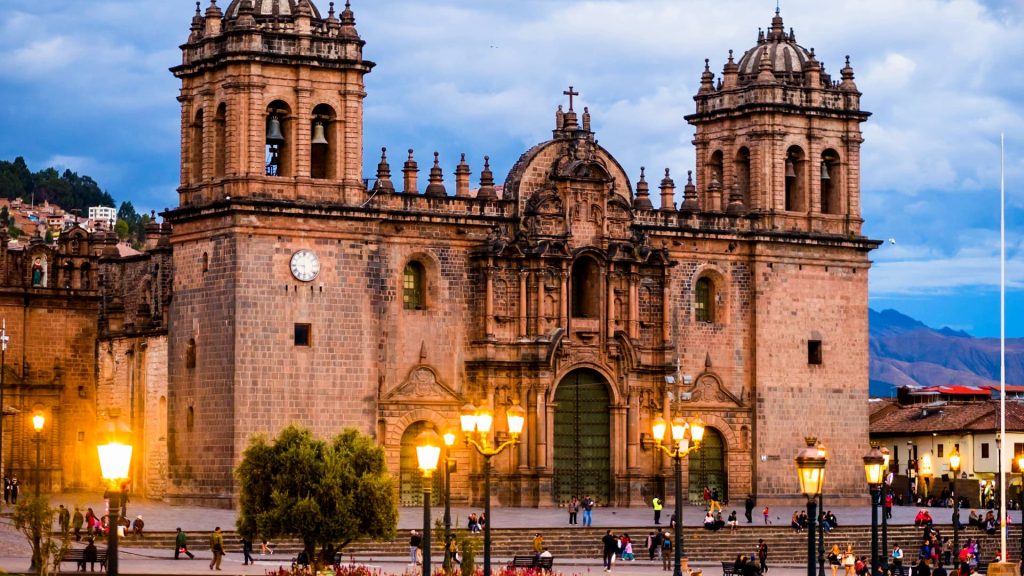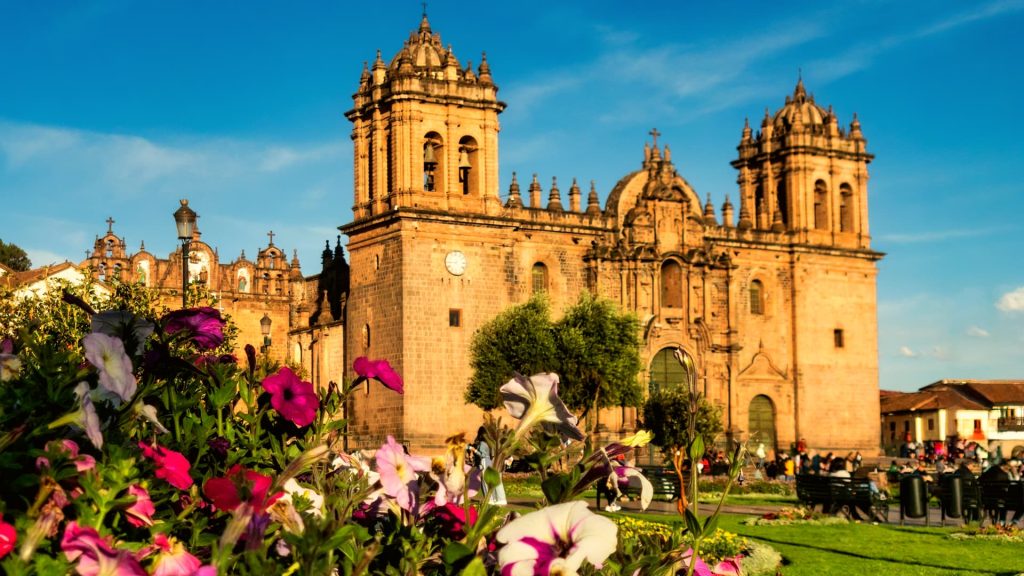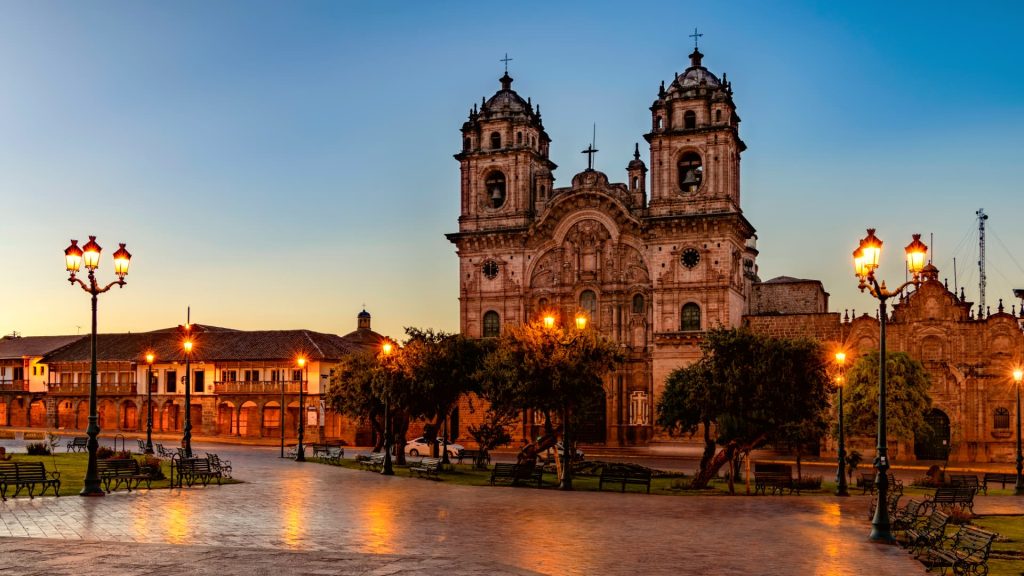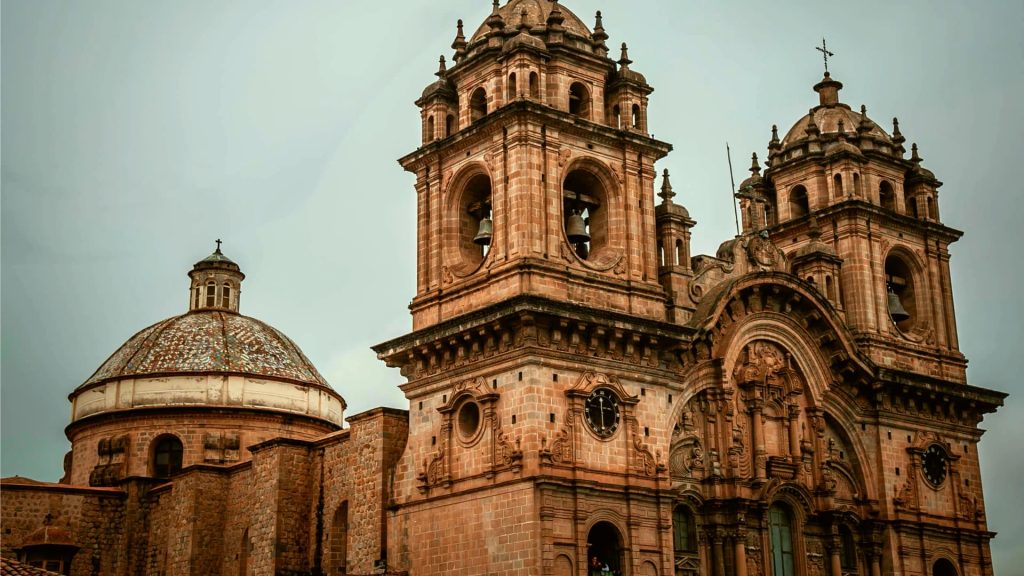The Majestic Cathedral of Cusco
The Cathedral of Cusco, also known as the Basilica Cathedral of the Virgin of the Assumption, is one of the city’s most emblematic constructions and an architectural gem that combines Spanish colonial influence with Andean cultural richness. Located in the Plaza de Armas, this imposing structure is a testament to the religious and artistic syncretism that defines Cusco history. Explore its history, architecture, and art, and discover why it is a must-visit on your journey.

History: From Inca Palace to Cathedral of Cusco
During the Inca era, this site was home to the palace of Inca Wiracocha. After the Spanish invasion, the colonizers built the church on Incan foundations, consolidating their dominance in both the political and religious spheres.
Construction of the cathedral began in 1560 and lasted for nearly a century, finishing in 1654. During this time, stones from Sacsayhuamán, the ancient Inca archaeological complex, were used, showcasing the appropriation and transformation of pre-Hispanic materials into colonial architecture. The project was led by several architects, including Juan Miguel de Veramendi, Juan Correa, and Miguel Gutiérrez Sencio, who infused their talent into this grand masterpiece.
Did you know? The Cusco Cathedral took more than 90 years to build, and its foundations belonged to an Inca palace!

Architecture of the cathedral of Cusco: A Fusion of Styles
The Cusco Cathedral is a remarkable example of colonial architecture, blending Gothic, Renaissance, and Baroque styles. Its imposing stone façade stands out with its three main doors and two towers that dominate the Plaza de Armas.
The interior is even more impressive. The structure consists of three naves, separated by massive columns and adorned with golden details. Its coffered ceiling, in the Mudéjar style, reflects the Moorish influence on Spanish architecture. Additionally, the main altar, covered in silver, is one of the most striking pieces and symbolizes the splendor of religious art from that period.
Did you know? The cathedral’s main altar is covered with more than 400 kilos of pure silver, showcasing the luxury of the colonial era.

Art and Religious Treasures
One of the cathedral’s main attractions is its collection of colonial art, especially paintings from the Cusco School. This artistic movement, developed during the Viceroyalty, combines European elements with Andean cosmovision, resulting in unique and highly symbolic works.
Among the most notable paintings is Marcos Zapata’s famous representation of The Last Supper, where the biblical figures share a meal that includes cuy (guinea pig), a traditional Andean dish. This unique interpretation is a clear example of the cultural syncretism present in Cusco’s art.
Additionally, the cathedral houses stunning gilded wooden altarpieces, religious sculptures, and a cedar-carved choir stall, considered one of the most beautiful in the Americas. It also preserves the image of Señor de los Temblores (Lord of the Earthquakes), the patron saint of Cusco, whose procession during Holy Week is one of the city’s most significant religious events.
Did you know? The image of Señor de los Temblores is considered Cusco’s protector, especially since the 1650 earthquake, when it is said that his presence helped calm the disaster.

Reasons to visit the Cathedral of Cusco
If you visit Cusco, the cathedral is a must-see. Beyond its historical and artistic significance, it offers a unique experience for travelers interested in the city’s culture and spirituality. Here are a few reasons to include it in your itinerary:
- Admire its majestic architecture: Its stone construction and breathtaking interior make it one of the most beautiful churches in South America.
- Discover the art of the Cusco School: Its paintings and sculptures offer a glimpse into the cultural fusion of the colonial period.
- Connect with history: Walking through its halls and chapels is like traveling through time, from the Inca era to the present day.
- Experience a spiritual moment: Whether or not you practice the Catholic faith, the cathedral’s atmosphere invites reflection and awe.
- Enjoy the Plaza de Armas: After your visit, you can experience Cusco’s vibrant daily life and energy.
Did you know? Cusco’s Plaza de Armas was the ceremonial and political center of the Inca Empire, known as Huacaypata.

Practical Information for Visitors
The Cusco Cathedral is open every day, and admission usually includes access to other nearby colonial churches, such as the Church of the Society of Jesus. It is recommended to visit with a guide to better understand its history and the stories behind its artworks.
The entrance fee varies, with discounts available for students and local residents. Additionally, photography with flash is not allowed inside the cathedral to preserve its paintings and sculptures.
Did you know? To build the cathedral, the Spanish used stones from Sacsayhuamán, one of the largest Inca temples.

The Cusco Cathedral is one of the city’s most important religious centers, a testament to history, art, and faith that continues to captivate those who visit. Its grandeur and cultural richness make it an unmissable destination for anyone wanting to discover the essence of Cusco. If you have the opportunity to explore it, don’t hesitate to walk through its halls and be amazed by every detail.



